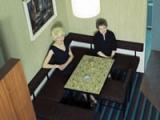Fifty years of six o’clock closing of pubs had ended two days earlier, after a referendum convinced the government to change the antiquated licensing law.
Drink
Events In History
Prohibition supporters presented Parliament with a petition containing more than 240,000 signatures demanding an end to the manufacture and sale of alcohol in New Zealand.
Six p.m. closing of pubs was introduced as a temporary wartime measure. It ushered in what became known as the 'six o'clock swill', in which patrons drank their fill before closing time. The practice was to last for 50 years.
Articles
Wellington cafe culture

Café culture has become integral to Wellington's identity. This culture began in the 1930s with the emergence of the milk bar, followed by coffee houses in the 1950s. After a period of decline in the 1960s and 70s, the city's café scene has grown in spectacular fashion over the last 20 years. Read the full article
Page 1 - Wellington cafe culture
Café culture has become integral to Wellington's identity. This culture began in the 1930s with the emergence of the milk bar, followed by coffee houses in the 1950s. After a
Page 2 - Overview
Wellington city centre is renowned for its flourishing café scene and the culture it inhabits. But it was nearly 1950 before there was much sign of the sparkling capital that
Page 4 - Design and technology
New construction materials and equipment fashioned the cafe culture rising in the 1950s. Wellingtonians were introduced to the espresso machines as European styled cafes
Page 3 - Immigration and Society
The rise of coffee houses in the 1940s, 50s and 60s was not a phenomenon confined to Wellington, or indeed to New Zealand. The connection between the history of cafe culture and
Page 5 - Music and cafe culture
Entertainment generally and music in particular have always been a part of the Wellington cafe scene.
Page 6 - Personalities
New Zealand in the 1940s and 1950s has been described as a drab and uniform place. From the late 1950s, however, a café culture was established throughout the
Page 7 - Further information
Sources on Wellington cafe
Food in the 20th century

The pavlova - that frothy, baked confection of egg whites and sugar - has long been seen as an icon of New Zealand cuisine; its place of origin has been debated with Australians for just as long in one of the many instances of trans-Tasman rivalry. Read the full article
Page 1 - Food in 20th century New Zealand
The pavlova - that frothy, baked confection of egg whites and sugar - has long been seen as an icon of New Zealand cuisine; its place of origin has been debated with Australians
Page 2 - Dining out
Before the 1960s, New Zealanders had a limited choice both of venue and of food if they wanted to dine
Page 3 - Seafood consumption
New Zealand is an island nation. Its inland and coastal waters support fish and shellfish in
Page 4 - Tea and coffee break
Tea was a 'great mainstay' of 'thirsty colonial New Zealand', the food historian Tony Simpson
Page 5 - Fruit and vegetables
A house and garden on a patch of land were part of the 'New Zealand dream' for most of the 20th
School of Radiant Living

The School of Radiant Living was a movement active in New Zealand from the late 1930s until the late 1980s. Founder Dr Herbert Sutcliffe taught a holistic philosophy of physical, psychological and spiritual health. Read the full article
Page 8 - The eliminating diet
To obtain physical fitness, it is of vital importance that the right mental attitude should accompany the food diet to enable the emotions, nerves and glands to co-operate with
Page 9 - Salad recipes
Colour, beauty, exquisite artistry find joyous expression in the Art of Salad Making. The homemaker who serves salads so deliciously and artistically tempting that the family
1947 Greymouth beer boycott

What would it take for West Coasters to boycott their beloved beer? Greymouth hotel-keepers found out in 1947, when an organised attempt to raise the price of beer sparked one of the most effective consumer boycotts ever seen in New Zealand. Read the full article
Page 1 - The 1947 Greymouth beer boycott
What would it take for West Coasters to boycott their beloved beer? Greymouth hotel-keepers found out in 1947, when an organised attempt to raise the price of beer sparked one of
Page 2 - Pub culture
Between 1919 and 1967 all public hotels in New Zealand officially closed at 6 p.m., but these hours were only nominally observed on the West Coast.
Page 3 - The boycott begins
In mid 1947 there were rumours that the price of beer was about to rise. It was a decision that no publican wanted to take alone because customers might move to another hotel
Page 4 - Industrial action
After the first week of the Greymouth beer boycott it became clear that the Licensed Victuallers' Association (LVA), supported by the breweries, was not going to yield.
Page 5 - Working Men’s Clubs
A number of Working Men's Clubs had been established in major urban areas since the late 19th century, but there were none on the West Coast. The beer boycott provided a catalyst
Page 6 - End of the 1947 beer boycott
By early December 1947 business was gradually returning to some pubs in the larger towns, but the boycott was still effective in smaller centres.



























